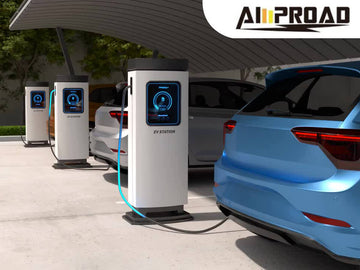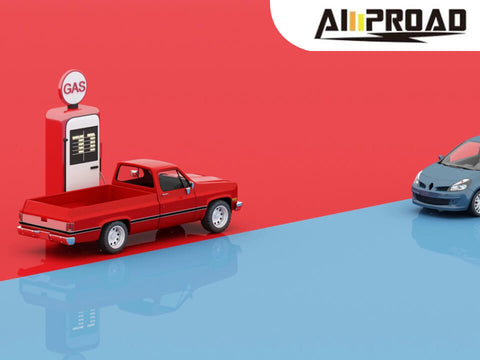
Level 3 chargers, also known as DC fast chargers, are high-powered charging stations designed to provide rapid charging for electric vehicles (EVs). Unlike Level 1 and Level 2 chargers, which use alternating current (AC) to charge vehicles, Level 3 chargers utilize direct current (DC) power, enabling significantly faster charging speeds. These chargers can deliver a substantial charge to an EV in a relatively short amount of time, making them ideal for quick top-ups during long journeys or at public charging stations.
Level 3 chargers are commonly found at public charging stations along highways, major thoroughfares, and in urban areas. Their rapid charging capabilities make them well-suited for situations where EV owners need to quickly recharge their vehicles while on the road or during extended trips. Additionally, Level 3 chargers are often installed at commercial locations such as shopping centers, airports, and businesses, providing convenient charging options for EV owners while they go about their daily activities. These chargers play a crucial role in expanding the infrastructure for electric vehicles and promoting their widespread adoption by addressing range anxiety and increasing accessibility to charging facilities.
How Do Level 3 Chargers Differ from Level 1 and Level 2 Chargers?
Charging Speed Comparison
The most significant difference between Level 3 chargers and Level 1 or Level 2 chargers lies in their charging speed. While Level 1 chargers offer the slowest charging speeds, suitable primarily for overnight charging, Level 2 charger provides faster charging, ideal for daily use. In contrast, Level 3 chargers boast rapid charging capabilities, delivering a substantial charge to an electric vehicle in a matter of minutes. This unparalleled charging speed makes Level 3 chargers the preferred choice for EV owners in need of quick top-ups during long journeys or at public charging stations.
Installation Requirements
Another key difference between Level 3 chargers and Level 1 or Level 2 chargers is the installation requirements. While Level 1 and Level 2 chargers typically require standard electrical outlets and can be installed by homeowners or electricians with basic skills, Level 3 chargers demand specialized equipment and professional installation. Due to their high voltage and power requirements, Level 3 chargers necessitate the expertise of certified technicians to ensure safe and proper installation. This specialized installation process adds to the overall cost and complexity of implementing Level 3 charging infrastructure, making it less common for home use compared to Level 1 or Level 2 chargers. However, despite the additional requirements, Level 3 chargers offer unmatched convenience and efficiency for rapid charging needs.
What Factors Influence the Feasibility of Home Installation for Level 3 Chargers?
Considering the feasibility of installing Level 3 chargers at home involves various factors. Let's explore these factors in more detail:
Power and Voltage RequirementsLevel 3 chargers are characterized by their high power and voltage demands, distinguishing them from Level 1 and Level 2 EV charger. These chargers typically operate at much higher voltage levels, often exceeding 400 volts, and require substantial electrical power to deliver rapid charging speeds. Due to their specialized DC fast charging capabilities, Level 3 chargers draw significantly more power than Level 1 or Level 2 chargers, necessitating specialized equipment and electrical infrastructure to support their operation.
Infrastructure ConsiderationsEvaluating the feasibility of home installation for Level 3 chargers involves assessing the existing electrical infrastructure of the property. Homes must have adequate electrical capacity and infrastructure to accommodate the high power demands of Level 3 chargers. This may require upgrades to the electrical panel, wiring, and circuitry to ensure compatibility and safety. Additionally, consideration must be given to the physical space and location for installing the charger, as Level 3 chargers often require dedicated spaces with access to high-power electrical lines. Consulting with a qualified electrician or charging infrastructure specialist is essential to assess the feasibility of home installation for Level 3 chargers and determine any necessary upgrades or modifications to support their operation.
Are There Any Home Installation Options for Level 3 Chargers?
Considering the potential for home installation of the fastest home EV charger, specialized options exist to accommodate Level 3 chargers within residential settings. These solutions involve customized setups tailored to meet the specific requirements of Level 3 charging infrastructure.
Specialized Home Installations
While Level 3 chargers are primarily deployed at public charging stations, some homeowners opt for specialized home installations to bring the rapid charging capabilities of these chargers to their doorstep. These customized setups often involve working closely with electricians and charging infrastructure specialists to assess the feasibility of integrating Level 3 chargers into existing home electrical systems. Such installations may require modifications to the home's electrical infrastructure, including upgrades to wiring, circuitry, and the electrical panel, to support the high power demands of Level 3 chargers. Additionally, considerations must be made for physical space and location, ensuring adequate ventilation and access to high-power electrical lines for safe and efficient operation.
Professional Consultation
Given the complexity and technical requirements associated with home installation of Level 3 chargers, seeking professional consultation is essential. Electricians or specialists with experience in charging infrastructure can provide invaluable insights and expertise in assessing the feasibility of integrating Level 3 chargers into residential settings. They can conduct thorough evaluations of the home's electrical infrastructure, identify any necessary upgrades or modifications, and recommend optimal placement and installation methods for Level 3 chargers. Moreover, professional consultation ensures compliance with safety standards and regulations, mitigating risks and ensuring the reliability and longevity of the charging infrastructure. By consulting with experts in the field, homeowners can make informed decisions regarding the feasibility and viability of home installation options for Level 3 chargers, maximizing the benefits of rapid charging convenience within their residential environments.
What Are the Benefits and Drawbacks of Home Installation of Level 3 Chargers?
Considering the feasibility of home installation for Level 3 EV chargers entails weighing the benefits and drawbacks associated with these rapid charging solutions.
Benefits
One of the primary advantages of home installation of Level 3 EV chargers is the rapid charging capabilities they offer. Level 3 chargers, also known as DC fast chargers, provide significantly faster charging speeds compared to Level 1 and Level 2 chargers, allowing for quick top-ups of electric vehicles (EVs) in a matter of minutes. This rapid charging convenience enables EV owners to recharge their vehicles conveniently at home, reducing reliance on public charging stations and extending the range of EV travel. For those with busy lifestyles or frequent long journeys, the ability to rapidly recharge their EVs at home offers unparalleled convenience and flexibility.
Drawbacks
Despite the benefits, home installation of Level 3 EV chargers comes with several drawbacks that may deter homeowners from pursuing this option. One significant drawback is the costly installation process associated with Level 3 chargers. Unlike Level 1 and Level 2 chargers, which can be relatively straightforward and affordable to install, Level 3 chargers require specialized equipment and professional installation due to their high power and voltage requirements. Additionally, home installation of Level 3 chargers may necessitate infrastructure upgrades to the home's electrical system, such as wiring, circuitry, and the electrical panel, further adding to the overall cost and complexity. Furthermore, the availability of Level 3 chargers for home installation may be limited, as they are more commonly deployed at public charging stations along highways and urban areas. This limited availability may pose challenges for homeowners seeking to install Level 3 chargers at their residences, particularly in regions with inadequate charging infrastructure.
Considerations for Selecting a Home EV Charger
Considering the myriad of options available, several factors come into play when selecting the most suitable home EV charger.
Assessing Charging Needs
Assessing your charging needs is crucial in determining the most appropriate home EV charger for your lifestyle. Evaluate your driving habits, including typical daily distances and frequency of long trips, to gauge the charging requirements of your electric vehicle (EV). If you primarily use your EV for short commutes and have access to overnight charging, a Level 1 charger may suffice. However, for individuals with longer daily commutes or frequent long journeys, a Level 2 or Level 3 charger with faster charging speeds may be more practical.
Budgetary Considerations
Budget considerations play a significant role in the selection process for a home EV charger. Evaluate the cost implications of different charger types, including the purchase price and installation expenses. Level 1 chargers typically offer the most budget-friendly option, requiring minimal investment for both the charger and installation. In contrast, Level 2 and Level 3 chargers come with higher upfront costs, particularly due to the need for professional installation and potential infrastructure upgrades. Consider your budget constraints and weigh the upfront costs against the long-term benefits and convenience of faster charging speeds.
Future-Proofing
Future-proofing your home EV charger selection involves considering compatibility with future EV models and technological advancements. While Level 1 and Level 2 chargers cater to current EV models, investing in a Level 3 charger may provide added compatibility with future advancements in electric vehicle technology. Additionally, ensuring compatibility with emerging charging standards and protocols can help future-proof your charging infrastructure, allowing for seamless integration with upcoming EV models. Consider the pace of technological advancements and the likelihood of future upgrades to EV technology when selecting a home EV charger to ensure optimal compatibility and longevity.




